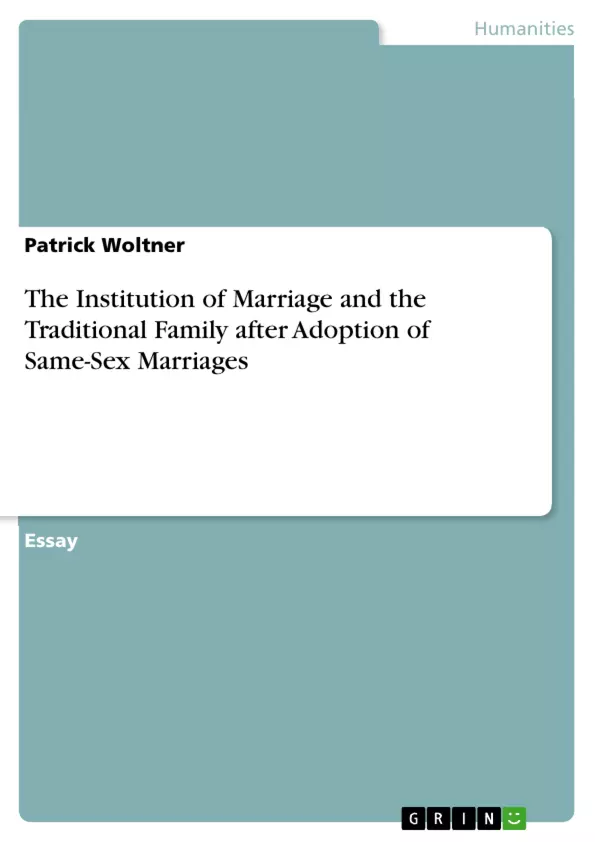Like any controversial topic, introduction of same-sex marriages has engendered multiple arguments – both in favor and against it – which come from various spheres of social life, from religion to law. For instance, a debatabase website ProCons.org contains 15 arguments for and 13 ones against same-sex marriages ; and one can imagine that the actual number of all possible arguments is by far not limited even to this quantity.
People who have not gone deep into this debate might wonder why this topic is disputable: seemingly, legalization of same-sex marriages is for the benefit of LGBT people, while it does not anyhow harm straight people, therefore, it should leave the latter ones either positive (as satisfaction of other people’s needs somehow brings harmony and friendship to the entire society), or, at least, indifferent (as same-sex marriages are not related to heterosexuals in any way). Speaking in terms of biology, the relationship between gay and straight people on the issue of same-sex marriages can, at the first glance, be viewed as commensalism: one organism turns the relationship to its advantage while the other one is neither better off, nor worse off. Yet, taking a closer look at the debate allows us to understand that both proponents and opponents of gay marriages would strongly disagree with my “commensalism” assumption:
“Amongst the likeliest effects of gay marriage is to take us down a slippery slope to legalized polygamy and ‘polyamory’ (group marriage). Marriage will be transformed into a variety of relationship contracts, linking two, three, or more individuals (however weakly and temporarily) in every conceivable combination of male and female” (Kurtz 2003).
“The announcement I made last week about my views on marriage equality -- same principle. <…> The basic idea -- I want everybody treated fairly in this country. We have never gone wrong when we expanded rights and responsibilities to everybody. That doesn’t weaken families; that strengthens families. It’s the right thing to do” (President Barack Obama, “The View” TV show, 14 May 2012).
Although the two opinions oppose each other, there is one thing they have in common: they both imply that expanding the right to marry to homosexual couples would affect the institutions of family and marriage themselves, either positively or negatively. [...]
Inhaltsverzeichnis (Table of Contents)
- Introduction
- From a rise of incest to legal polygamy: how adoption of same-sex marriages can weaken traditional ones
- \"Even where legal recognition and marital rights and benefits are available to same-sex couples…\"
- \"Redefining marriage would abandon the norm of male-female sexual complementarily…\"
- \"One value that remains remarkably strong…\"
Zielsetzung und Themenschwerpunkte (Objectives and Key Themes)
This paper argues that the legalization of same-sex marriage will not have a significant impact on the institution of the traditional family. It aims to demonstrate that the introduction of same-sex marriage will not weaken traditional families, but rather enhance the institution of marriage. This argument is developed by analyzing the arguments of both proponents and opponents of same-sex marriage.
- The potential impact of same-sex marriage on the institution of marriage and the traditional family.
- The analysis of arguments for and against the weakening of traditional families by the legalization of same-sex marriage.
- The exploration of the concept of social change and how it relates to the institution of marriage.
- The examination of the relationship between social norms and individual choices within the context of marriage.
- The analysis of empirical studies that attempt to measure the impact of same-sex marriage on heterosexual relationships.
Zusammenfassung der Kapitel (Chapter Summaries)
The first chapter examines arguments that suggest the legalization of same-sex marriage would weaken the institution of the traditional family. It critiques the idea that the acceptance of same-sex marriage would lead to a “slippery slope” towards the legalization of polygamy, incest, and bestiality. Additionally, it challenges the notion that the presence of same-sex couples will negatively influence heterosexual couples’ views on monogamy and fidelity.
Schlüsselwörter (Keywords)
The key concepts and themes explored in this paper include the institution of marriage, the traditional family, same-sex marriage, social change, individual choices, social norms, and the impact of legal recognition on societal structures.
- Quote paper
- Patrick Woltner (Author), 2015, The Institution of Marriage and the Traditional Family after Adoption of Same-Sex Marriages, Munich, GRIN Verlag, https://www.grin.com/document/299013



